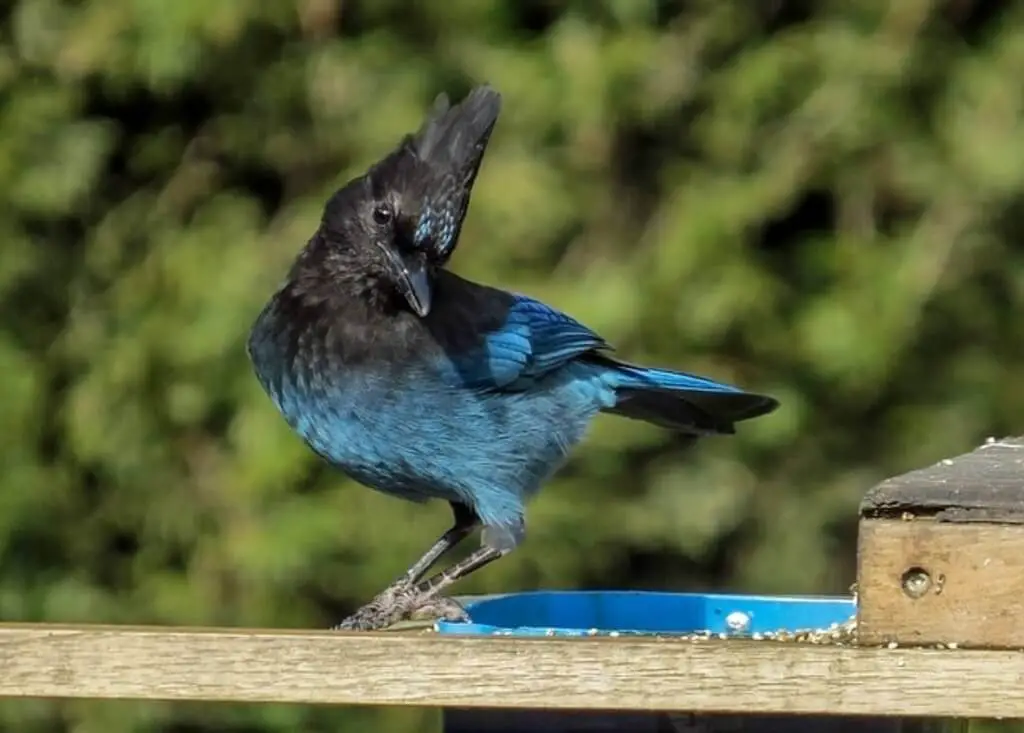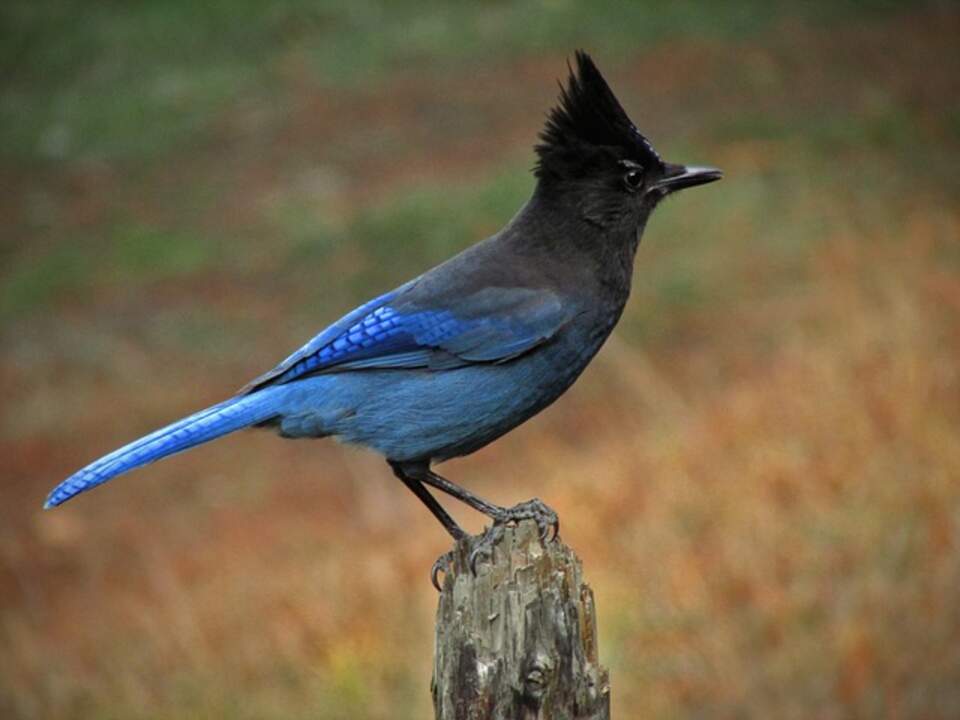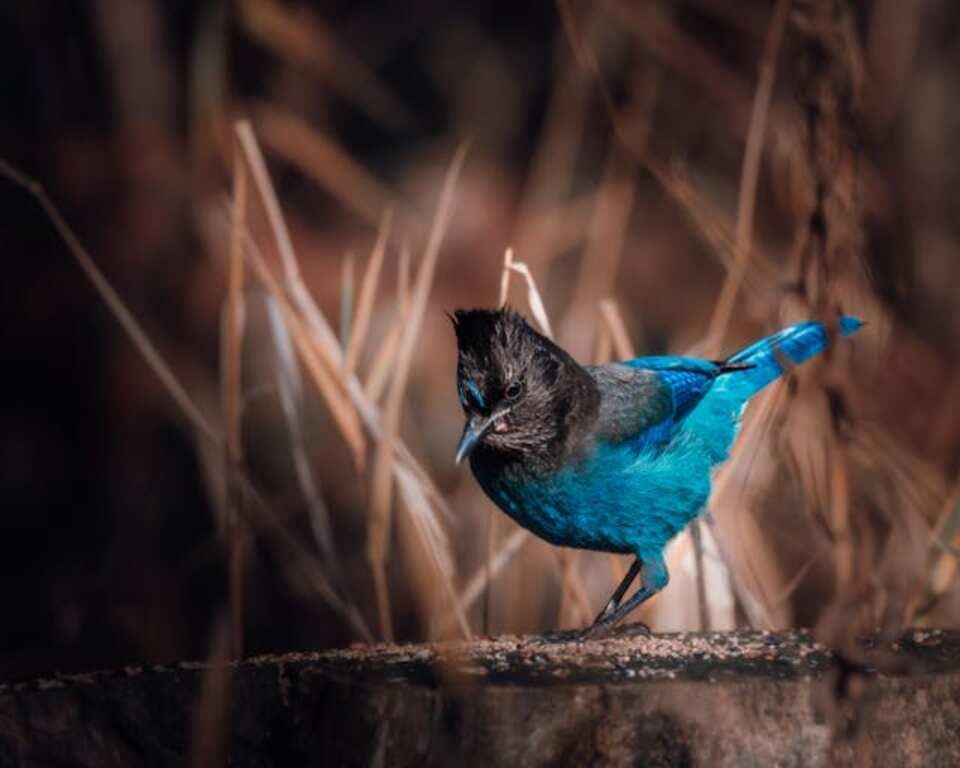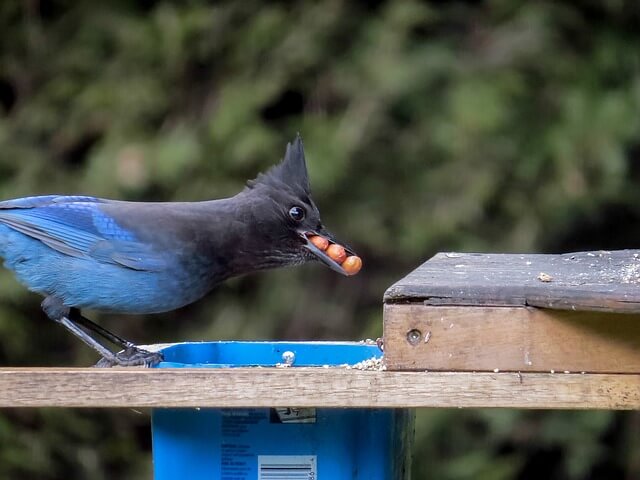Ever wondered, how to attract Steller’s Jays to your yard? These striking, blue-and-black birds are attracted to areas with plenty of trees, especially conifers, and a steady supply of food like seeds, nuts, and berries. By adding bird feeders, providing shelter, and offering water sources, you can turn your yard into an inviting space for these bold, colorful visitors. In this article, you’ll learn practical tips to help make your yard more attractive to Steller’s Jays and encourage them to stick around.
Table of Contents
Getting to Know Steller’s Jays
Before we dive into the nitty-gritty of attracting these beautiful birds, let’s take a moment to get to know our potential visitors a little better.
| Characteristic | Details |
|---|---|
| Scientific Name | Cyanocitta stelleri |
| Size | 11-13 in; 17 in wingspan |
| Color | Deep blue body, black head and crest |
| Habitat | Western North America; coniferous forests |
| Diet | Insects, seeds, nuts, berries, small animals |
| Feeder Foods | Peanuts, sunflower seeds, suet, fruit |
| Nesting | High branches; cup-shaped nest |
| Eggs | 2-6, pale blue with brown spots |
| Calls | Loud “shack-shack-shack” |
| Behavior | Bold, curious, intelligent, noisy |
| Attracting Tips | Plant conifers, use platform feeders |
| Challenges | Loud, can dominate feeders |
| Interesting Fact | Can mimic other birds and sounds |
| Seasonal Activity | Active year-round, more visible in winter |
The Striking Appearance of Steller’s Jays
Steller’s Jays are hard to miss with their vibrant blue plumage and distinctive crest. The first time I saw one up close, I was struck by the intensity of their color – a deep, almost electric blue that seems to shimmer in the sunlight. Their head, neck, and upper chest are a rich black that gradually transitions into that stunning blue. And let’s not forget about that crest! It’s like they’re permanently wearing a punk rock hairdo.
Habitat and Range: Where the Jays Roam
Steller’s Jays are primarily birds of the western mountains of North America. They’re most commonly found in coniferous forests, which explains why they’re such frequent visitors to my yard with its border of Douglas firs. If you live in the western United States, western Canada, or even parts of Mexico, you’re in Steller’s Jay territory.
Behavior: The Personality of Steller’s Jays
One thing I’ve learned about Steller’s Jays is that they’re full of personality. They’re bold, curious, and not afraid to make their presence known. In fact, their raucous calls were what first alerted me to their presence in my neighborhood years ago. They’re also incredibly intelligent, like all corvids, and have been known to mimic the calls of other birds and even mechanical sounds.
Creating a Steller’s Jay-Friendly Environment
Now that we understand a bit more about these charismatic birds, let’s talk about how to make your yard more appealing to them.
Landscaping for Steller’s Jays
When I first decided I wanted to attract Steller’s Jays to my yard, I thought it would be as simple as putting out a feeder. While that can certainly help (more on that later), I quickly learned that creating the right environment was key.
Planting Trees and Shrubs
Steller’s Jays love coniferous trees, so if you have the space and the right climate, consider planting some evergreens. Douglas firs, ponderosa pines, and western red cedars are all favorites. But don’t worry if you can’t plant large trees – dense shrubs can also provide the cover and nesting sites these birds prefer.
Here’s a table of plants that can help attract Steller’s Jays to your yard:
| Plant Type | Examples | Benefits |
|---|---|---|
| Coniferous Trees | Douglas Fir, Ponderosa Pine, Western Red Cedar | Nesting sites, cover, natural food source |
| Berry-producing Shrubs | Elderberry, Serviceberry, Dogwood | Food source, cover |
| Nut-bearing Trees | Oak, Hazelnut | Food source |
| Native Flowers | Sunflowers, Coneflowers | Seed source, attracts insects (another food source) |
Creating a Water Source
Like all birds, Steller’s Jays need water for drinking and bathing. A birdbath or small fountain can be a great addition to your yard. I remember the day I installed my birdbath – within hours, I saw a Steller’s Jay splashing about, looking like it was having the time of its life!
Providing the Right Food
Steller’s Jays are omnivores and opportunistic feeders, which means they’ll eat a wide variety of foods. This is great news for us bird enthusiasts because it gives us plenty of options for attracting them.
Natural Food Sources
While feeders can be a great way to attract jays, don’t underestimate the power of natural food sources. The berry-producing shrubs and nut-bearing trees mentioned in the landscaping section can provide a feast for jays. I’ve spent many enjoyable moments watching jays in my yard, skillfully cracking open acorns from the oak tree I planted years ago.
Feeder Options
When it comes to feeders, platform feeders or hopper feeders work best for Steller’s Jays. These larger birds appreciate a stable surface to land on while they eat.
As for what to put in your feeders, here are some Steller’s Jay favorites:
- Peanuts: Both in-shell and shelled peanuts are a hit. I’ve found that offering peanuts in the shell gives the jays a chance to exercise their problem-solving skills, which they seem to enjoy.
- Sunflower Seeds: Black oil sunflower seeds are a staple for many backyard birds, including Steller’s Jays.
- Suet: Especially in winter, suet can be a great high-energy food for jays. I use a special sturdy suet feeder designed for larger birds.
- Corn: Cracked corn or whole kernel corn can be attractive to jays.
- Fruit: While not their primary food, jays will eat fruit. Try offering apple slices or grapes as a treat.
Remember, if you’re offering peanuts or corn, it’s important to keep the feeding area clean to prevent mold growth, which can be harmful to birds.
When to Expect Steller’s Jays
One of the most common questions I get from fellow bird enthusiasts is, “When should I expect to see Steller’s Jays in my yard?” The answer, as with many things in nature, is: it depends.
Seasonal Patterns
Steller’s Jays are generally year-round residents in their range, which means if you’re in an area where they live, you have the potential to see them any time of year. However, I’ve noticed some seasonal patterns in my own backyard observations.
Spring and Summer
Spring is when Steller’s Jays are most active in establishing territories and building nests. This is often when I see the most jay activity in my yard. They’re busy gathering nesting materials and searching for food to feed their young.
In late spring and early summer, you might be lucky enough to see juvenile jays. They look similar to adults but often have a duller coloration and may beg for food from their parents. Watching a family of jays in your yard can be an incredibly rewarding experience.
Fall and Winter
As the weather cools, Steller’s Jays may become more reliant on backyard feeders. This is when having a reliable food source can really pay off in terms of jay visits. In my experience, fall and winter mornings are prime time for jay activity at feeders.
Time of Day
Steller’s Jays are diurnal, meaning they’re active during the day. In my yard, they seem to be most active in the early morning and late afternoon. There’s nothing quite like enjoying your morning coffee while watching these beautiful birds go about their business!
Patience and Persistence: Keys to Success
If there’s one thing I’ve learned in my years of trying to attract birds to my yard, it’s that patience is crucial. When I first started trying to attract Steller’s Jays, I was disappointed when they didn’t show up immediately. But nature operates on its own schedule, and it can take time for birds to discover and trust a new food source or habitat.
Consistency is Key
One of the most important things you can do is to be consistent. If you decide to put out feeders, make sure to keep them stocked regularly. Birds come to rely on these food sources, especially in winter when natural foods may be scarce.
Keep a Journal
I highly recommend keeping a journal of your birdwatching efforts. Note when you first put out feeders, what types of food you offer, and any bird sightings. This can help you track patterns over time and adjust your strategy if needed. Plus, it’s incredibly rewarding to look back and see how your yard has transformed into a bird haven over time.
Coexisting with Steller’s Jays: Solutions
As much as I love having Steller’s Jays in my yard, I’ll be the first to admit that they can sometimes be a bit… challenging. They’re bold birds with big personalities, and that can occasionally lead to some issues. But don’t worry – with a little patience and creativity, you can find ways to coexist happily with your jay visitors.
Managing Noise
Steller’s Jays are known for their loud, raucous calls. While I find their vocalizations charming, I know not everyone feels the same way. If the noise becomes an issue, try positioning your feeders away from your house or your neighbors’ houses. You might also consider only putting out limited amounts of food at a time to prevent large, noisy gatherings.
Protecting Other Birds
Steller’s Jays are larger than many other backyard birds and can sometimes dominate feeders. To ensure that smaller birds also have a chance to feed, consider setting up multiple feeding stations around your yard. You can also use feeders specifically designed for smaller birds that jays can’t access.
Keeping Things Clean
With increased bird activity comes the need for increased cleaning. Make sure to regularly clean your feeders and birdbaths to prevent the spread of diseases. I make it a habit to clean my feeders at least once a week, more often if they’re heavily used.
The Rewards of Attracting Steller’s Jays
After all this talk of challenges, you might be wondering if it’s worth the effort to attract Steller’s Jays. In my experience, the answer is a resounding yes! The joy of seeing these beautiful birds in your yard far outweighs any minor inconveniences.
A Connection to Nature
There’s something incredibly special about creating a space that welcomes wildlife. Every time I see a Steller’s Jay in my yard, I’m reminded of the connection between my small piece of the world and the larger ecosystem around me.
Learning Opportunities
Observing Steller’s Jays can be an excellent way to learn about bird behavior. From their complex social interactions to their problem-solving abilities, these birds never cease to amaze me. I’ve spent countless hours watching jays in my yard, and I always seem to notice something new.
Photography Opportunities
If you’re into photography, Steller’s Jays make excellent subjects. Their striking blue plumage and expressive faces can result in some truly stunning images. Just remember to always prioritize the birds’ well-being over getting the perfect shot.
Conclusion
As we wrap up this guide, I hope you’re feeling inspired and empowered to start your own journey of attracting Steller’s Jays to your yard. Remember, creating a bird-friendly environment is not just about attracting a specific species – it’s about fostering biodiversity and creating a healthier ecosystem right in your backyard.
Starting this journey might seem daunting, but take it from someone who began as a complete novice: the rewards are well worth the effort. There will be challenges along the way, and things might not always go as planned. But the first time you look out your window and see a brilliant blue Steller’s Jay peering back at you, you’ll know that all your hard work has paid off.
So go ahead, plant that tree, set up that feeder, and keep your eyes peeled for that flash of blue. Your Steller’s Jay adventure is just beginning, and I can’t wait for you to experience the joy these beautiful birds can bring to your life. Happy birding!
Check out my article on top feeder picks: 15 Best Bird Feeders For Jays.






